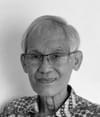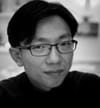The Benevolent Madam Tan Say Seang: Penang philanthropist par excellence
by
Eugene Quah

Previous Post
What Bliss A Hidden Bookstore Brings
5 min read
“BOOKSTORES ARE LONELY FORTS, spilling light onto the sidewalk. They civilise their neighbourhoods,” said John Updike. The truth is, they are even lonelier thes...
Next Post
Penang Nyonya Recipes: Preserving Our Important Heritage
4 min read
DURING MY TALK at Penang Institute on Penang Nyonya Cuisine — Past, Present & Future, I elaborated on our intangible cultural heritage’s characteristics a...
You might also like
The Benevolent Madam Tan Say Seang: Penang philanthropist par excellence
9 min read
ON SATURDAY, 14 December 1907, at 12.30pm, the sentry on duty at the police station in the rustic village of Tanjung Tokong “noticed that one of the buildings i...
Penang Nyonya Recipes: Preserving Our Important Heritage
4 min read
DURING MY TALK at Penang Institute on Penang Nyonya Cuisine — Past, Present & Future, I elaborated on our intangible cultural heritage’s characteristics a...
My Home on Chew Jetty
5 min read
THE CLAN JETTIES have traditionally been perceived as male-dominant communities. Though the gender divide within the jetties is not as evident as it used to be,...




-modified.jpg)